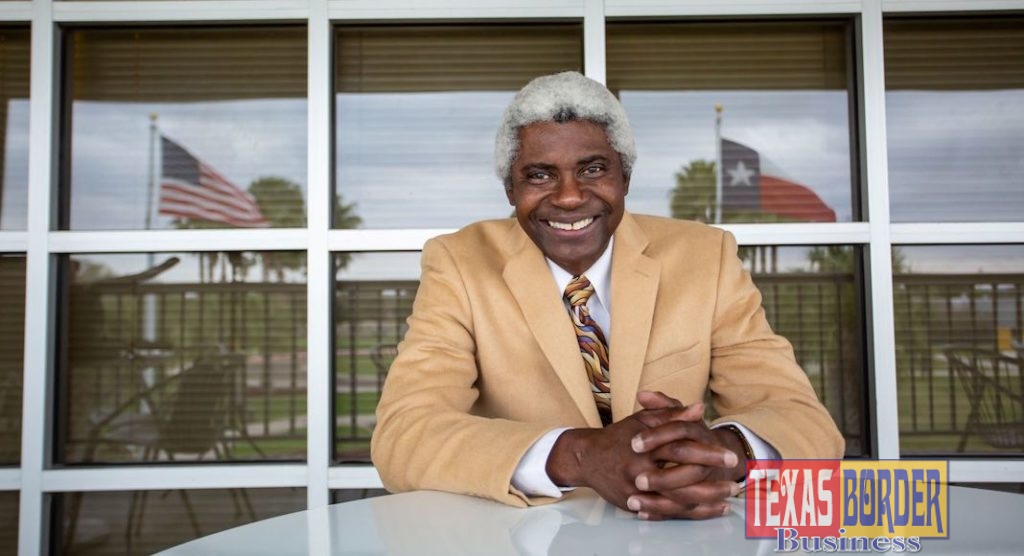STC professor’s journey from segregation to higher education

Texas Border Business
RIO GRANDE CITY, TEXAS – For nearly 20 years, Dr. Darrial Reynolds has been teaching core classes in political science at South Texas College. That means that most students over the past two decades have taken at least two of his courses.
His engaging teaching style and charming southern drawl is part of students’ interest in taking his courses, no doubt. But what inspires students most about Dr. Reynolds is his connection to their own individual stories. Like many of his first-generation students, he had to overcome hurdles to succeed in higher education, and that’s what inspired his “no-matter-what” attitude.
“I tell them I was 24 when I went to college, and I had been out of school for seven years,” he shares. “My situation was worse than y’all’s.”
At the time, Dr. Reynolds had been washing cars and working in factories and service stations — lacking the basic skills he would need to earn a degree. In fact, it took years of determination to reach where he is today.
Growing up, Dr. Reynolds attended segregated schools in Talladega, Alabama, about 50 miles east of Birmingham. Though the Brown v. Board of Education case pronounced segregation to be unconstitutional in 1954, by the time he started elementary school in 1965, the decision was still not being enforced in his state.
“My first five years of school, I went to black schools, and the white kids in my town went to white schools, so we didn’t even know each other until the fifth grade,” Dr. Reynolds recalls. At that time, his town decided to experiment with a pupil placement to “take about 10 black kids and send them over to a white school in our town. I was one of those 10 kids,” Dr. Reynolds remembers. By the time he returned to school for sixth grade, they had finally integrated the whole school system.
“That was part of history,” reflects Dr. Reynolds. “I was a part of that.”
Dr. Reynolds moved to Chicago when he was 15. He completed his senior year of high school without graduating because he did not complete his physical education requirement. He then relocated to Cleveland, where he worked in the Midland Steel Products factory.
“There I was, just working various minimum-wage jobs,” Dr. Reynolds recalls. He later returned to Alabama to live with his grandparents, “and while I was down there, I’m not even thinking about school. I was just thinking about working.” It was there, working as a janitor, that he had an “epiphany from God.”
“One day, I realized that in order to have a better future, I needed to get my GED and go to college,” says Dr. Reynolds. “It just came to me.
“At first, I didn’t even know I could make it. I just worked hard and tried to prove to myself that I could make it.”
Not only did Dr. Reynolds “make it” — earning his bachelor’s degree from New Mexico Highlands University — he also found that his true passion is in academia. “I wanted to go all the way in school, get my doctorate, and then go from living in university housing to faculty housing.
“It was just a little dream,” recalls Dr. Reynolds. “But it happened. That’s what I did.”
In May of 1991, Dr. Reynolds received his master’s degree from Idaho State University. He got married just a few months later, and “when I came back from my honeymoon, I entered the doctorate program in political science.”
It took six long years to earn his Ph.D., after which he taught political science for several years at Idaho State University. In 2000, he found his home at South Texas College … and the rest is history.
“When I came down [to South Texas], I knew it was a good fit,” says Dr. Reynolds, who fell in love with the college’s mission. “I ended up at South Texas College, and I’ve been here ever since.”
With the college still developing in Dr. Reynolds’s first year of employment, he taught in warehouses, a former elementary school, and high schools at night. But all of that changed by year two when STC constructed brand new buildings to support the college’s rapid expansion.
“We’ve grown a lot. We have over 30,000 students now, and back then, we had about 10,000,” says Dr. Reynolds. “We are highly respected across the state and the community. We’ve proven ourselves.”
Dr. Reynolds teaches upwards of 250 students every semester at the Starr County Campus, while also supporting projects that help first-generation students thrive, like Co-Requisite Ascender, Dual Enrollment Academies, and Early College High School.
He tells his first-generation students that, like him, “you already know your disadvantages. That should be motivation enough … to prove you are serious about what you are trying to do.”
One of the most important skills Dr. Reynolds teaches his first-generation students is how to read closely and think critically. In his own days as a college student, he says, “I would rewrite the book… My fingers would get tired!” He expects the same diligence from his students: “That’s your job — you go back and reread, rewrite… You put it in your own words, and you’re showing that you understand it.”
For Dr. Reynolds, the educational journey starts anew every day, as he helps his students boost critical skills and self-assurance. For example, he says that many first-generation students may be afraid to take notes in class. He had the same fears when he was a student, but like any skill, he says that note-taking only improves with practice.
“First, you read your books, so when you come to class, you have an idea of what the topics are about,” he says. “If you’re scared or feel shame about taking notes … you have to let that go.”
Dr. Reynolds knows firsthand that if students work hard, they can make it.
“STC is the school that’s giving you the opportunities,” he says. “And I’m a part of that, helping them achieve their goals.”
One way Dr. Reynolds fights for those goals is by empowering students to find resources and take charge of their own education.
“You have to know how to assert yourself and get the best out of these programs,” he says. “I’m not going to follow you home every day to see if you’re doing your work.”
As STC prepares to celebrate Black History Month, Dr. Reynolds reflects on what drove him to his calling in the first place. For the professor, teaching affords an uplifting opportunity to inspire students who are daring to improve their lives through education.
“I love teaching, so it’s easy for me to be motivated to teach, just trying to bring these things alive and making it relevant,” says the 20-year STC professor, who still feels pride in reaching core learning objectives and transforming his students.
“My time at STC has given me the opportunity to work at being the best mentor and teacher that I can be each and every day, and every time I go into the classroom,” says Dr. Reynolds. “I made a good choice when I came to STC.”














